Book Publications
These are books authored or edited by members of the UPSE faculty.
 |
Capitalism and Inclusion under Weak Institutions 2018. Author: Raul V. Fabella “… Drawing on an eclectic group of authors, including Schumpeter, Piketty, Marx and many others, the 11 chapters range far and wide, from macroeconomics and international economic policy to institutional change and social policy. Taken together, they persuasively set out an agenda for a fairer and more prosperous Philippines. Professor Fabella’s book is a must-read for anybody interested not only in the Philippines, but also the developing world in general.”– HAL HILL, H.W. Arndt Professor Emeritus of Southeast Asian Economies Australian National University To know more about the book, read the synopsis here.
|
| ————————— | |
 |
The Philippine Economy: No Longer the East Asian Exception? 2018. Editors: Ramon L. Clarete, Emmanuel F. Esguerra, Hal Hill In this volume, a leading group of scholars pose the question, has the Philippine economy rejoined the dynamic East Asian mainstream and, if so, what set of policies and priorities are required to maintain the strong economic momentum of recent years? Successive chapters address issues related to growth and poverty, infrastructure and urbanization, education, health, the environment, energy, development finance, and governance and institutions.This volume has been written with a broad audience in mind. First and foremost it is for readers in, and interested in, this fascinating and important country with a population that now exceeds 100 million people. Second, it will appeal to those in the broader development community with an interest in the analytical and policy challenges that democratic, middle-income countries face as they struggle to lift their citizens out of poverty and to achieve broad-based and environmentally sustainable growth. |
| ————————— | |
 |
Core Concepts of Calculus with Applications 2018. Author: Rolando A. Danao This textbook offers a brief introduction to calculus designed for undergraduate students in disciplines that require only a semester of differential and integral calculus. Although emphasis is put on understanding concepts, the book promotes appreciation of the importance, vitality, and power of calculus through illustrative applications drawn from fields such as the physical sciences, economics, business, management science, engineering, public health, biology, and population dynamics. The book will also be helpful to other students as it contains the core concepts of calculus. Core Concepts of Calculus with Applications is a gentle introduction to calculus for university students who seek an understanding of the essentials of the course. The book maintains a sensible balance between rigor and intuition between the abstract and the practical… The book is well-written, well-laid out, and carefully edited … and will prove most beneficial to both instructors and students.– From the Foreword |
| ————————— | |
 |
Sustainable Economic Development: Resources, Environment, and Institutions. 2014. Editors: Arsenio M. Balisacan, Ujjayant Chakravorty, and Majah-Leah V. Ravago. This book presents 25 articles that lay the foundations of sustainable development in a way that facilitates effective policy design. The editors mix broad thematic papers with focused micro-papers, balancing theories with policy designs.The book begins with two sections on sustainable development principles and practice and on specific settings where sustainable development is practiced. Two more sections illuminate institutions, governance, and political economy. Additional sections cover sustainable development and agriculture, and risk and economic security, including disaster management. This rich source of information should appeal to any institution involved in development work, and to development practitioners grappling with an array of difficult on-the-ground developmental challenges. To know more about the book, read the promo material. To order a copy, click here.
|
| ————————— | |
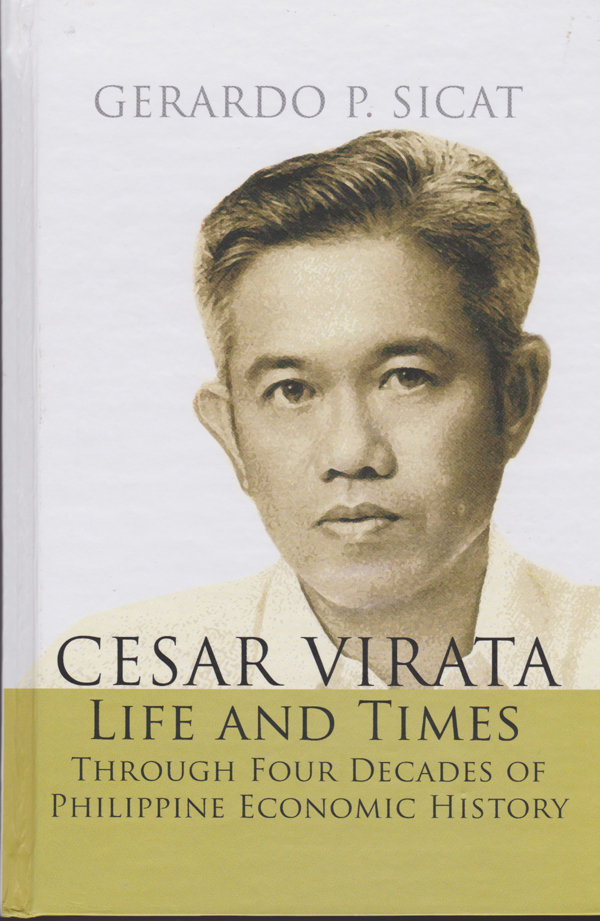 |
Cesar Virata: Life and Times Through Four Decades of Philippine Economic History. 2014. Author: Gerardo P. Sicat Published by the University of the Philippines Press “One of the least heralded of important national officials in our recent history, Cesar Virata is also one who has done so much for the country during his long years of service. His story had to be told, and I am glad that I have written it. …I hit upon the thought that if I could write the story of Cesar Virata, then I would be able to tell the story of the times much more effectively. I would get to see how that period contributed to the nation’s growth and prosperity. I would further be able to show how we got into some problems that we could have avoided more easily. In this way, perhaps, I would have succeeded in getting a fair deal on the story of the times.” – GPSicat (from Crossroads, Philippine Star Column) |
| ————————— | |
 |
2012/2013 Philippine Human Development Report Published by the Human Development Network (HDN) in cooperation with the United Nations Development Programme (UNDP), the 2012/2013 Philippine Human Development Report with the theme “Geography and Human Development” is the 7th in the series of Reports which began in 1994. It focuses on geography as a deep determinant of human development and examines how it is linked to human development outcomes across provinces.You can download the full report as well as the previous reports from the HDN website. |
| ————————— | |
 |
Ravago, Majah‐Leah V., James Roumasset, and Arsenio Balisacan. 2010. “Economic Policy for Sustainable Development vs. Greedy Growth and Preservationism,” in J. A. Roumasset, K. M. Burnett, and A.M. Balisacan (eds.), Sustainability Science for Watershed Landscapes. Singapore: Institute of Southeast Asian Studies; Los Baños, Philippines: Southeast Asian Regional Center for Graduate Study and Research in Agriculture.”Sustainability science addresses the central challenge facing global society of how to reduce poverty and meet demands of a large human population desiring a good life while simultaneously maintaining the environment that provides the life support system on which long-term prosperity depends. This book provides evidence and insight into key elements of what is required to achieve sustainability by framing important policy questions and illustrating the consequences of policy alternatives in systems with complex interactions.” – Stephen Polasky, University of Minnesota |
| ————————— | |
 |
In Search of a Human Face: 15 Years of Knowledge Building for Human Development in the Philippines This volume compiles the theme chapters of the 1994, 1997, 2000, 2002, and 2005 editions of the Philippine Human Development Report and postscripts from third-party experts who reflect on their continuing relevance while also providing fresh insight and augmenting the original analysis. The proceedings of “Human Development in the Philippines: 15 Years of Research and Advocacy,” a roundtable discussion held in October 2009, is also featured. This book is published by the Human Development Network (HDN) in cooperation with the United Nations Development Programme (UNDP).You can download the full report from the HDN website. |
| ————————— | |
 |
2008/2009 Philippine Human Development Report This report has the theme “Institutions, Politics and Human Development in the Philippines”. The Philippine Human Development Network (HDN) in collaboration with the United Nations Development Programme (UNDP), the New Zealand Agency for International Assistance (NZAID) and the Philippine Institute for Development Studies (PIDS) published this volume.You can download the full reportfrom the HDN website. |
| ————————— | |
 |
2005 Philippine Human Development Report Given the severity of the situation and the extreme costs it imposes upon the country’s social and economic development, the 5th Philippines Human Development Report (5th PHDR) sets out to explore the various dimensions and major sources of conflict in the country; analyze the current dynamics that may assist to resolve or aggravate conditions; and relate these to the concept of human development and human security in the context of the country’s development strategy. The Report presents the latest statistics on provincially disaggregated Human Development Indicators, Human Poverty Indicators, Gender-related Development Indicators, and Human Security Indicators. Based on these indicators, the Report attempts to identify the provinces which are the “most peaceful and stable” as well as those that are “most vulnerable and at risk.” The theme of the 5th PHDR is “Peace, Human Security and Human Development” in the Philippines.You can download the full report from the HDN website. |
| ————————— | |
 |
2002 Philippine Human Development Report This volume’s theme is “Work and Well-Being.” Work is perhaps the most vital component of human development. Immediately it means income and survival. But with it also comes self-worth, social recognition, and healthy mental and emotional state. It is essential to well-being both as a means-to-an-end and as an end-in-it-self.You can download the full report as well as the previous reports from the HDN website. |
| ————————— | |
 |
2000 Philippine Human Development Report The 2000 PHDR, with the theme “Quality, Relevance and Access in Basic Education”, was adjudged by the UNDP Human Development Report Office as the best national human development report in the Asia-Pacific Region for the period 1999-2000 along with the China report. The UNDP cited the Philippine report for its excellent use of human development tools, presentation and design, and participatory approach and policy impact.You can download the full report as well as the previous reports from the HDN website. |
| ————————— | |
 |
1997 Philippine Human Development Report This volume’s theme is “Changing Status of Women.” The enhancement of women’s capabilities and opportunities to make choices is an important element of human development. The gains attained by the Philippines in increasing women’s access to education and jobs in certain sectors, and participation in elections as voters and candidates have been significant. You can download the full report as well as the previous reports from the HDN website. |
| ————————— | |
 |
1994 Philippine Human Development Report
The Philippines is slowly emerging from the social ruins caused by decades if economic mismanagement and political dictatorship. The government can now afford to think about national goals and expand on them, suggesting that new opportunities besides mere survival may now indeed be open. The question, however is whether the people have genuine choices. How can they tell whether the programs and policies taken ostensibly in their behalf will actually contribute to their welfare? What does welfare mean, after all? The concept of human development has been advanced precisely to answer these similar questions. Human development is the process of enabling people to have wider choices. It means expanding those capabilities that enable them to live a full life as human beings. Its most important dimensions are a person’s physical survival, health, level of knowledge, livelihood or income, and political freedom. These are the minimum basic needs that must be fulfilled. You can download the full report as well as the previous reports from the HDN website. |
| ————————— | |
 |
Built on Dreams, Grounded on Reality: Economic Policy Reforms in the Philippines. 2011. Editors – Raul Fabella, Jaime Faustino, Adrian Leftwich, and Andrew Parker. This is a volume of case studies on Philippine economic policy reform that contributes to the discourse on institutional change to create a better understanding of how human actors engender change. This publication is made possible by the support of the United States Agency for International Development (USAID) and the Australian Agency for International Development (AusAID). |
 |
Room for Maneuver – Social Sector Policy Reform in the Philippines. 2013. Editors – Raul Fabella, Jaime Faustino, Adrian Leftwich, and Andrew Parker. This publication is a product of the AusAID-The Asia Foundation partnership in the Philippines, which supports, advises, and builds the capacity of coalitions and networks, together with their leaders and allies inside and outside of government, to catalyze positive policy change, enhance the impact of policy reforms and processes, achieve sustained, high-impact policy reform, capitalize on opportunities that broaden and deepen reforms, and improve communication and knowledge sharing among reformers and stakeholders. |
| ————————— | |
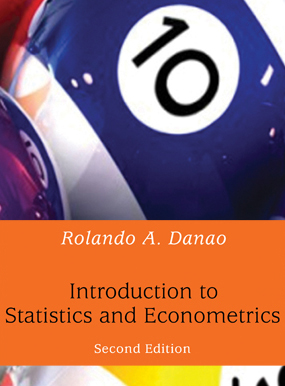 |
Introduction to Statistics and Econometrics, second edition, authored by Dr. Rolando A. Danao, is a book for beginning econometrics students. The major change in this edition is the addition of a chapter on logistic regression, a model of binary choice that is now commonly used in many disciplines including economics. Other changes include a section on instrumental variable estimation, end-of-chapter appendices on the use of Stata, in addition to EViews, to implement econometric techniques, and editorial revisions to improve exposition. Despite these changes, this edition retains the basic purpose and the basic format of the first edition, which won the 2004 National Academy of Science and Technology Outstanding Book Award. (UP Press) |
| ————————— | |
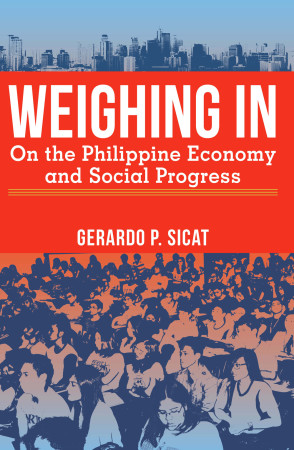 |
An eminent economist of the Philippines, Dr. Gerardo P. Sicat, shines a light on various aspects of the economy and social issues concerning his country. Examining the whole landscape involving economic prospects, investments, and changing perspectives, his investigations carry him to different subjects, from economic growth, the selling of the country as a tourism destination, OFW workers and labor migration, to Manila’s changing skyline. By digging beneath the surface, he unearths issues dealing with economic nationalism, corruption, the investment climate, and structural problems that need reform. (Anvil Publishing) |
| ————————— | |
 |
Ravago, Majah‐Leah V., James Roumasset, and Arsenio Balisacan. 2010. “Economic Policy for Sustainable Development vs. Greedy Growth and Preservationism,” in J. A. Roumasset, K. M. Burnett, and A.M. Balisacan (eds.), Sustainability Science for Watershed Landscapes. Singapore: Institute of Southeast Asian Studies; Los Baños, Philippines: Southeast Asian Regional Center for Graduate Study and Research in Agriculture. |
| ————————— | |
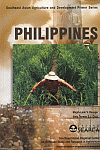 |
Ravago, Majah‐Leah V. and Amy Doreen S.J. Cruz. 2004. Southeast Asian Agriculture & Development Primer Series:Philippines , Los Baños SEARCA. |
| ————————— | |
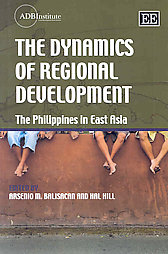 |
Balisacan, Arsenio M. (Editor)/ Hill, Hal (Editor). Synopsis: ‘The Dynamics of Regional Development‘ includes studies of regional development issues in the Philippines, commencing with historical and political dimensions, and including infrastructure, poverty and social progress, labour and migration, and regional impacts of liberalization and global integrations. |
| ————————— | |
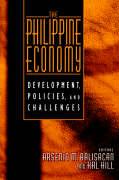 |
Balisacan, Arsenio M.; Hill, Hal. Synopsis: This book examines all major facets of the Philippine economy and development policy. Contributors to this volume look both to the past and to the future, and their approaches are variously descriptive, analytical, interpretive, and comparative. The book assesses trends since the 1980s, identifies major policy issues, and provides a balance sheet of achievements and deficiencies over the past decade and beyond. It highlights future challenges that need to be addressed if the country is to embark on a sustainable, durable, and equitable growth trajectory. The book also offers lessons from the country’s development experience which may be relevant for many countries at the present time. The volume has particular relevance for the country’s policymakers, academics and the business community, and will also appeal to a broader international audience. |
| ————————— | |
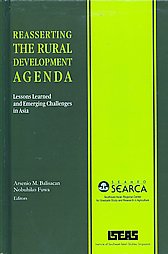 |
Arsenio M. Balisacan, Nobuhiko Fuwa. Published by Institute of Southeast Asian Studies, Singapore, 2007. Synopsis: The agricultural sector’s perceived importance in the international development circle waned dramatically after the 1980s, and investments in rural development and agricultural research and development declined sharply. This volume reasserts the role of agricultural and rural development in the economic development debate. By revisiting the evolution of ideas, paradigms and empirical evidence, and by drawing on Asian experiences, the book intends to set a reinvigorated agenda on agricultural and rural development both for research and policy discussions in the coming decades. Written by internationally acknowledged research scholars, this book is helpful to a wide range of audience, including researchers, policymakers, practitioners, and students interested in rural development in Asia and its future evolutions. |
| ————————— | |


